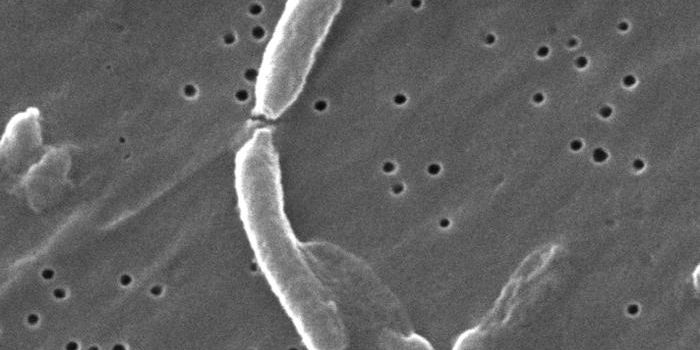The Tuberculosis Pathogen Is Captured Infecting a Cell
Tuberculosis has been around for a long time - it was once called 'consumption.' It is caused by a bacterial pathogen called Mycobacterium tuberculosis (Mtb); it can infect immune cells called macrophages in the lungs, cells that would normally act to kill an invader like Mtb.
Tuberculosis is estimated to have affected ten million people and caused one million deaths in 2018 alone, making it one of the world's leading causes of death. When the pathogenic Mtb bacterium is inhaled and leads to illness (not everyone gets sick when infected), it tends to affect the lungs and causes cough, fever, and weight loss. These symptoms may be mild for many months, and infected people can spread the illness to others during this time. Many strains of Mtb are becoming antibiotic-resistant, and people that are infected often have to take antibiotics for a couple of years. If untreated the disease can be fatal.
The pathogen is taken up by lung macrophages, but the bacterium has adapted in remarkable ways to its human host and is able to take control of these normally defensive cells. To learn more about how the pathogen infects cells, a team of researchers including Professor Trude Helen Flo at the Norwegian University of Science and Technology's Centre of Molecular Inflammation Research (CEMIR) captured the process of infected macrophages dying.
"We observed the tuberculosis bacterium and some of the proteins we study with fluorescent colors like blue, red, and green in the cells. We used advanced fluorescence microscopy to film them before studying them with a 3D electron microscope that has nanometer resolution," said Flo. The infection was captured over multiple 24-hour time-lapse series.
"The tuberculosis bacterium lives in macrophages that are the guards, waste removers, and caretakers of the immune system," noted Flo. "The tuberculosis bacterium lives in the world's best hiding place."
The researchers have now been watched as the pathogenic bacteria proliferate in the host cell to the point that the cell bursts, releasing the pathogens and spreading the infection to more cells where the process can repeat. These images have revealed how Mtb escapes its host.
"The TB bacterium does this by punching holes in the membrane that encloses the macrophages. This triggers an explosive immune response in which the cell they live in dies, allowing the bacteria to spread to other cells. The bacteria operate in two modes: one where they divide and multiply while hidden inside the cell they live in, and one where they break out and infect healthy tissue," explained Flo.
Now that researchers are getting a more complete picture of the infection, literally, they will be able to find ways to treat it more effectively.
"Antibiotics work against the bacteria, but we envision developing a treatment that could control the cell death and tissue damage caused by the tuberculosis bacterium. Combined with antibiotics, this might provide more effective treatment, but we aren't there yet," Flo noted.
Sources: Phys.org via Norwegian University of Science and Technology, Nature Communications








